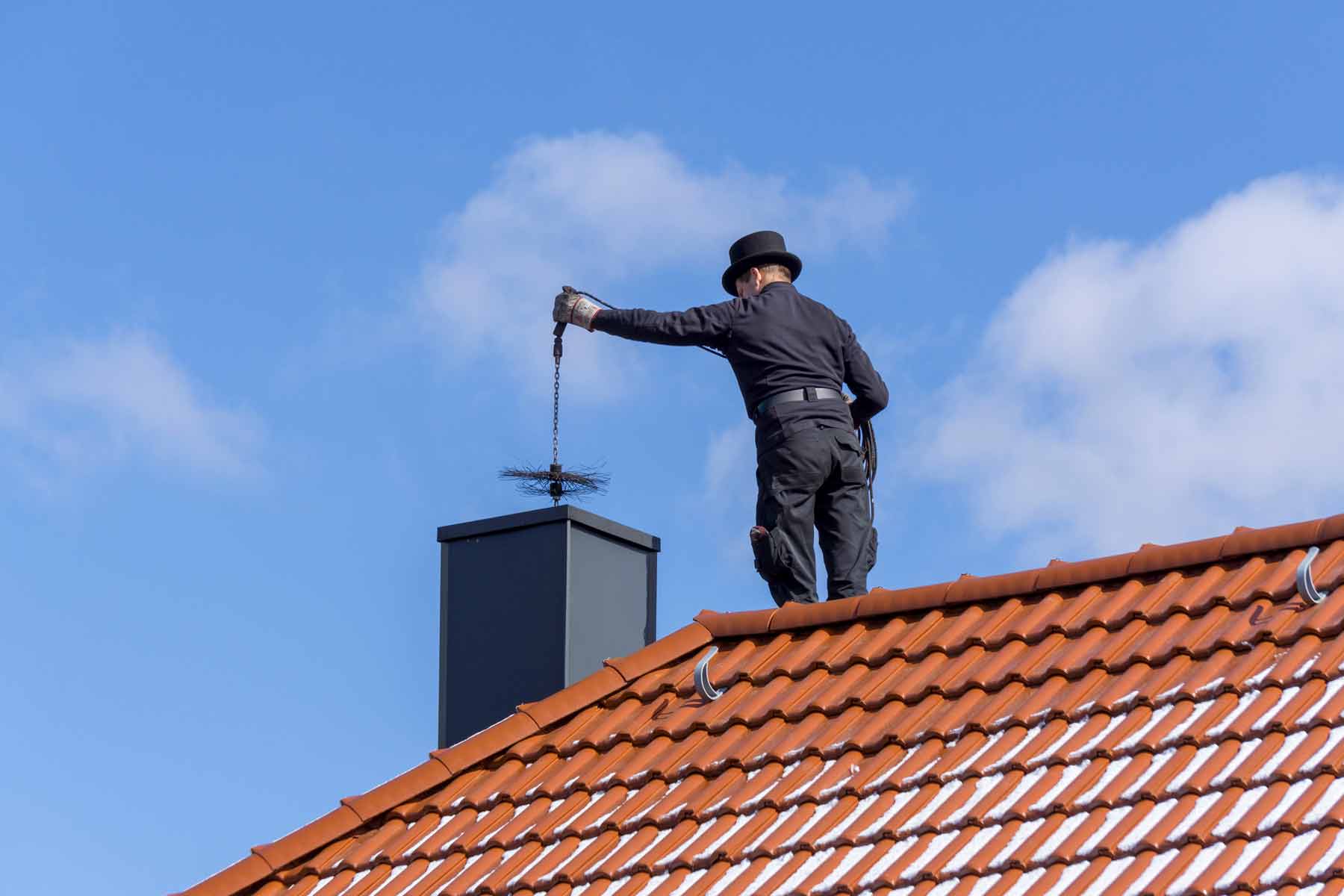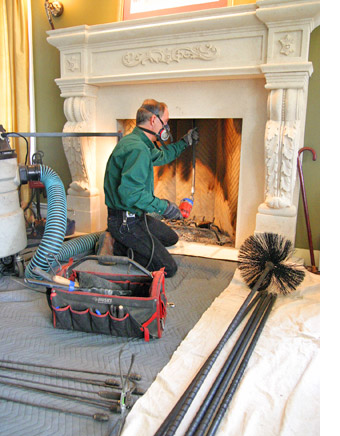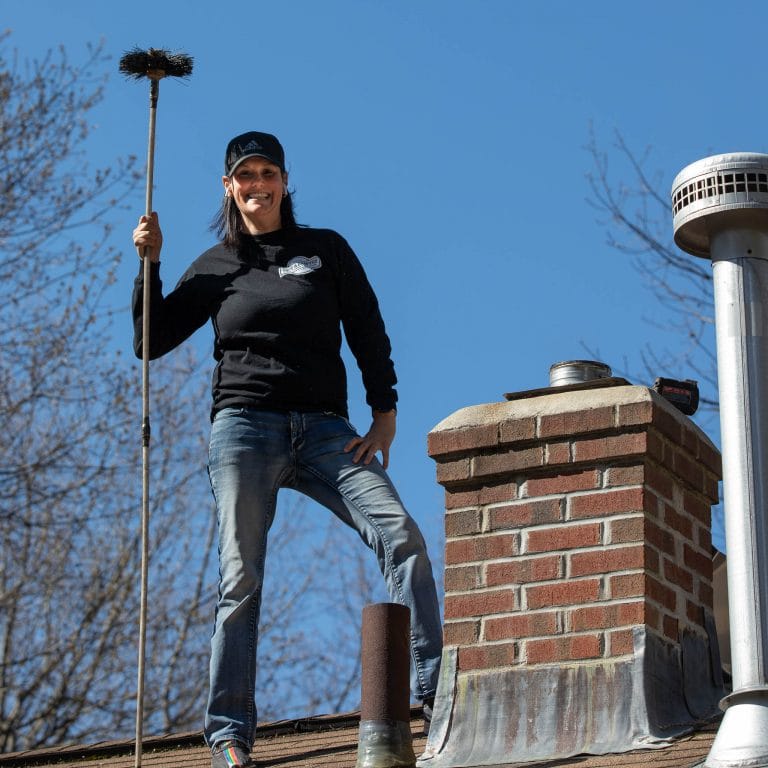Chimney Clean San Jose Quality: Ensuring a Clean and Efficient Fireplace
Chimney Clean San Jose Quality: Ensuring a Clean and Efficient Fireplace
Blog Article
Smokeshaft Cleansing: A Step-by-Step Guide to Keeping a Healthy And Balanced Fire Place
Routine chimney cleaning is an essential component of this maintenance regimen. By adhering to these guidelines, you will certainly learn how to collect the necessary devices, carry out a visual examination, clear debris and accumulation, move the smokeshaft, and complete the final steps for recurring maintenance.
Collecting the Needed Tools
To start the procedure of smokeshaft cleaning, the primary step is to collect all the necessary devices. Having the right devices handy ensures a effective and safe cleansing process. The important devices for chimney cleansing consist of a chimney brush, a ladder, ground cloth or plastic sheets, a flashlight, handwear covers, and a dust mask.
The chimney brush is the main device made use of to eliminate soot and creosote buildup from the flue - Chimney Clean San Jose. It is important to choose a brush that matches the size and form of your chimney.
A flashlight is important for checking the smokeshaft's interior for any type of signs of damages or blockages. Handwear covers are necessary to secure your hands from residue and various other dangerous materials, while a dirt mask aids prevent the breathing of particles.
Doing an Aesthetic Assessment

Making use of a flashlight, thoroughly check out the interior wall surfaces of the smokeshaft for any indications of damages, such as splits, loosened blocks, or mortar wear and tear. These concerns can compromise the chimney's structural integrity and position a serious safety and security hazard. Furthermore, check for any kind of indications of water damages, such as staining or efflorescence, as this can suggest a leaky chimney cap or blinking.
Next, evaluate the smokeshaft flue for any obstructions. Search for the presence of nesting products, leaves, or particles that may have accumulated gradually (Chimney Clean San Jose). These blockages can restrict air movement, boost the threat of carbon monoxide buildup, and hinder the chimney's ability to successfully air vent smoke
During the visual examination, pay attention to the smokeshaft crown, which is the top surface that secures the chimney from wetness. Seek fractures or missing pieces in the crown, as these can allow water to get in the smokeshaft and cause substantial damages.
Clearing Particles and Build-up
After completing the aesthetic examination, the following action in smokeshaft cleaning involves clearing up debris and build-up to ensure the appropriate functioning of the fireplace. With time, debris such as leaves, branches, and animal nests can collect in the chimney, blocking the circulation of air and triggering potential fire hazards. Furthermore, the accumulation of creosote, a tar-like substance, is an usual issue in chimneys. Creosote is created when wood or fossil fuels are melted, and if not removed routinely, it can bring about smokeshaft fires.
To get rid of debris and build-up, it is essential to utilize the right devices and techniques. A chimney brush, especially developed for this objective, is used to eliminate loosened particles and creosote from the smokeshaft wall surfaces. It is necessary to choose a brush that matches the dimension of your chimney to make sure efficient cleansing. Prior to beginning the cleaning procedure, ensure to cover the fireplace opening to protect against particles from falling under the space.
To begin, insert the brush into the chimney and move it up and down, rubbing the wall surfaces to displace any debris or creosote. Use a sweeping motion to guarantee detailed cleaning. It is suggested to start from all-time low and work your method up. When the brushing is total, utilize a vacuum or a smokeshaft brush expansion to eliminate the dislodged particles from the fire place.

Brushing Up the Smokeshaft
The sweeping of the smokeshaft is an essential action in preserving a healthy fireplace. Gradually, soot, creosote, and other debris can build up in the chimney, obstructing the circulation of air and possibly triggering a dangerous accumulation of flammable materials. Regular chimney sweeper not just makes certain correct air flow however likewise avoids the risk of chimney fires.
When it concerns smokeshaft sweeping, it is extremely suggested to employ a professional chimney move. These specialists have the expertise and tools essential to securely and successfully eliminate the collected debris from your smokeshaft. They will normally start by covering the fireplace to avoid any kind of residue or particles from entering your home. Utilizing customized brushes and vacuum cleaner equipment, they will certainly after that cleanse the chimney inside out, making certain that all the accumulation is thoroughly removed.
It is essential to keep in mind that the regularity of smokeshaft sweeping depends on several elements, such as the sort of gas utilized, the quantity of use, and the kind of chimney. As a basic rule of thumb, it is advised to have your chimney checked and brushed up at the very least yearly.
Final Steps and Upkeep
After completing the smokeshaft sweeping process, the first step in the final maintenance is to check hop over to these guys the smokeshaft cap and trigger arrestor. These components avoid debris, animals, and rainwater from going into the chimney.

Evaluate the inside of the fireplace for any kind of indicators of degeneration, such as cracks, loose blocks, or harmed mortar. These concerns can affect the architectural integrity and security of the fire place. If any kind of problems are found, consult a professional chimney sweeper or mason to address them quickly.
Ultimately, take into consideration installing carbon monoxide gas detectors near the fireplace and throughout your home. These gadgets can identify the existence of this hazardous gas, supplying an early warning system in case of a smokeshaft malfunction. Routinely examine and replace the More Help batteries in these detectors to ensure their performance.
Conclusion
In final thought, following a step-by-step overview for smokeshaft cleansing is important in preserving a healthy fire place. By collecting the required tools, carrying out a visual inspection, getting rid of debris and build-up, and brushing up the chimney, homeowners can ensure the safety and performance of their fire place.
The vital tools for smokeshaft cleaning consist of a chimney brush, a ladder, decrease cloths or plastic sheets, a flashlight, handwear covers, and a dust mask.
A smokeshaft brush, particularly designed for this purpose, is made use of to eliminate loosened debris and creosote from the smokeshaft walls. Normal chimney brushing up not only ensures correct ventilation yet also protects against the risk of smokeshaft fires.
When it comes to chimney sweeping, it is very recommended to work with a professional smokeshaft move. After completing the smokeshaft sweeping process, the very first step in the final upkeep is to examine the smokeshaft cap and spark arrestor.
Report this page